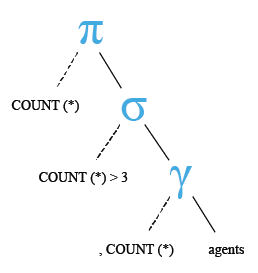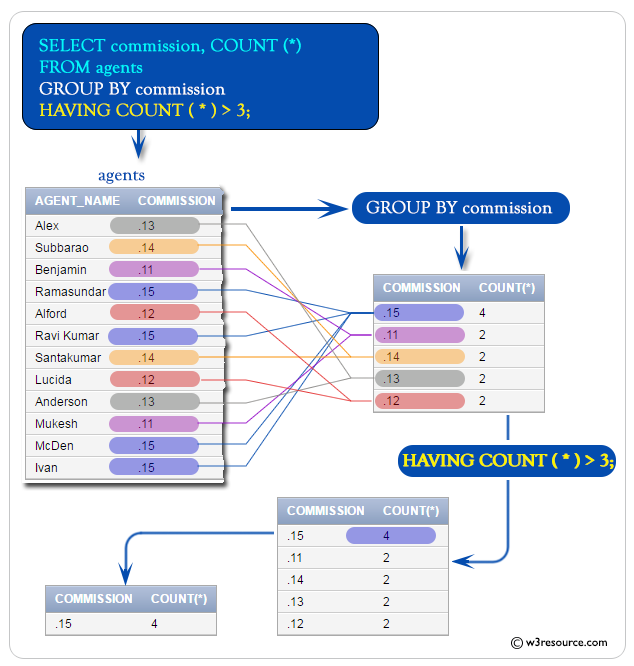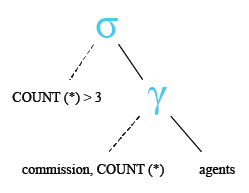SQL COUNT() with HAVING – w3resource
SQL COUNT() with HAVING
Last update on August 19 2022 21:51:36 (UTC/GMT +8 hours)
COUNT() with HAVING
The HAVING clause with SQL COUNT() function can be used to set a condition with the select statement. The HAVING clause is used instead of WHERE clause with SQL COUNT() function.
The GROUP BY with HAVING clause retrieves the result for a specific group of a column, which matches the condition specified in the HAVING clause.
Example:
To get data of number of agents from the ‘agents’ table with the following condition –
1. number of agents must be greater than 3,
the following SQL statement can be used:
SELECT COUNT( * )
FROM agents
HAVING COUNT(*)>3;Sample table : agents
Relational Algebra Expression:

Relational Algebra Tree:

Output:
COUNT(*)
----------
12
Pictorial Presentation :

SQL
COUNT
( ) with having and group by
Sample table: agents
To get data of ‘commission’ and number of agents for that commission from the ‘agents’ table with the following conditions –
1. number of agents for a particular ‘commisson’,
2. number of agents for that particular ‘commission’ must be more than 3,
the following SQL statement can be used :
SELECT commission, COUNT (*)
FROM agents
GROUP BY commission
HAVING COUNT(*)>3;
Relational Algebra Expression:

Relational Algebra Tree:

Output:
COMMISSION COUNT(*)
---------- ----------
.15 4
Note: Outputs of the said SQL statement shown here is taken by using Oracle Database 10g Express Edition.
Here is a slide presentation of all aggregate functions.
Check out our 1000+ SQL Exercises with solution and explanation to improve your skills.
Want to improve the above article? Contribute your Notes/Comments/Examples through Disqus.
Previous: COUNT with Group by
Next: SUM function






